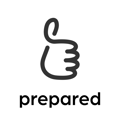In this insight, our co-founder Dr. Adi Marty explains what EPAs are and why they are so important in transforming medical education
In short
-
EPAs are specific, observable tasks of daily work
-
EPAs contain multiple competencies: knowledge, skills and attitudes
-
A trainee’s competence is measured by the level of autonomy to perform a task
Origin and general idea
In the past years the implementation of competency-based medical education (CBME-read more) introduced a major shift in mindset of how trainees are educated. The cornerstone of this concept are the so-called Entrustable Professional Activities, or EPAs by Olle ten Cate from the Netherlands.
Basically, EPAs are what every person in medicine does every day, divided into observable units. The performance of these units can be rated on a scale of how much supervision the performing trainee needs. This rating is made prospectively and answers the question: how much supervision would the trainee need, if he or she will perform this EPA again tomorrow?
A single EPA includes typically several competencies. Every medical field has its own EPA-list that sums all tasks performed in this field.
Why do we need EPAs?
While competencies are descriptors of a person, EPAs are descriptors of the work to be performed. The traditional evaluation of whether a task was performed well or poorly is a very subjective assessment by a supervisor.
This rating practice lacks accuracy and isn’t sensitive to nuances of competency.
EPAs help to further differentiate by describing these nuances translated for the work environment.
Assessing competence along these nuances not only give us a more granular picture of true competence but help to formulate better feedback and learning goals.
What does this mean in practice?
EPAs need to be observable tasks. They have a clear beginning and end and are to be “entrusted” to a trainee. The notion of TRUST is of great importance. Our patients put their trust in us as professionals. To deserve this trust, we need to go through our postgraduate training to gain more and more autonomy for tasks with increasing complexity.
Let's take the physical examination of a patient as an example. A healthcare professional can be considered competent if he or she has acquired specific knowledge and skills to thoroughly examine a patient and demonstrated this examination with adequate attitudes for an empathetic and meaningful patient interaction.
The EPA concept fertilizes the progress of our trainees through the implementation of meaningful feedback. This enables them to stepwise increase their autonomy with the ultimate goal of becoming highly specialized professionals who deserve the trust our patients and the public puts in us.
Further readings
Ten Cate O.
Nuts and bolts of entrustable professional activities. J Grad Med Educ. 2013;5(1):157-158. doi:10.4300/JGME-D-12-00380.1
Ten Cate O, Chen HC, Hoff RG, Peters H, Bok H, van der Schaaf M. Curriculum development for the workplace using Entrustable Professional Activities (EPAs): AMEE Guide No. 99. Med Teach. 2015;37(11):983-1002. doi: 10.3109/0142159X.2015.1060308. Epub 2015 Jul 14. PMID: 26172347.
Hauer KE, Ten Cate O, Boscardin C, Irby DM, Iobst W, O'Sullivan PS. Understanding trust as an essential element of trainee supervision and learning in the workplace. Adv Health Sci Educ Theory Pract. 2014 Aug;19(3):435-56. doi: 10.1007/s10459-013-9474-4. Epub 2013 Jul 27. PMID: 23892689.
